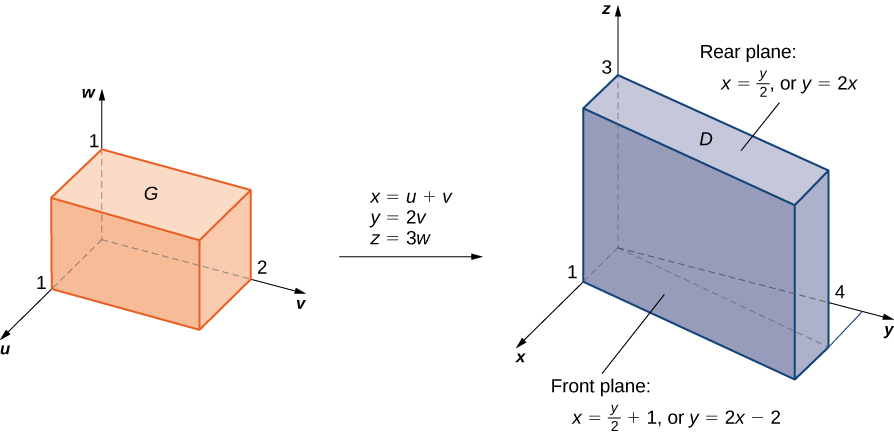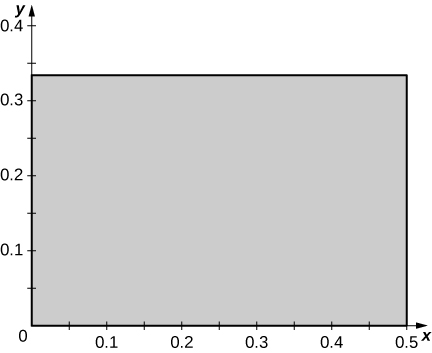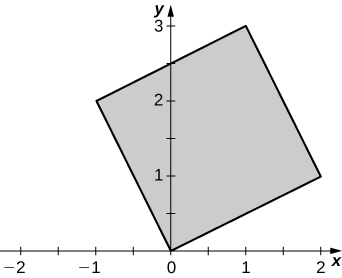| << Chapter < Page | Chapter >> Page > |
Let’s try another example with a different substitution.
Evaluate the triple integral
in by using the transformation
Then integrate over an appropriate region in
As before, some kind of sketch of the region in over which we have to perform the integration can help identify the region in ( [link] ). Clearly in is bounded by the planes We also know that we have to use for the transformations. We need to solve for Here we find that and
Using elementary algebra, we can find the corresponding surfaces for the region and the limits of integration in It is convenient to list these equations in a table.
| Equations in for the region | Corresponding equations in for the region | Limits for the integration in |
|---|---|---|

Now we can calculate the Jacobian for the transformation:
The function to be integrated becomes
We are now ready to put everything together and complete the problem.
Let be the region in defined by
Evaluate by using the transformation and
In the following exercises, the function on the region bounded by the unit square is given, where is the image of under
a.
and
The functions
and
are continuous and differentiable, and the partial derivatives
are continuous on
b.
and
c.
is the rectangle of vertices
in the
the following figure.

a.
and
The functions
and
are continuous and differentiable, and the partial derivatives
and
are continuous on
b.
and
c.
is the parallelogram of vertices
in the
see the following figure.


Notification Switch
Would you like to follow the 'Calculus volume 3' conversation and receive update notifications?